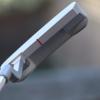-
Posts
12 -
Joined
-
Last visited
Profile Information
-
Gender
Not Telling
Topline's Achievements
-
I know that financial reasons have long been the reason that par 3 courses are not more prevalent. Specifically, courses are unable to charge high enough greens fees to justify the cost of owning-operating a par 3 golf course. Also, in recent decades most new golf courses were constructed by real estate developers aiming to sell golf course home sites, and a par 3 course does not fit the business model for selling homes. That said, if somehow more par 3 courses could be constructed, I think this would serve the game very well. Par 3 courses are perfect for youths and adults who are beginners to the game. Par 3 courses are ideal for super seniors for which long yardage shots and, or, long days are not a good fit. Par 3 courses are great for any skill level player looking to sharpen their short iron , wedge, putting game. Pace of play on a 9 hole par 3 course is usually 1.5 hours or less. So, there are lots of reasons that additional par 3 courses may be good for the game. I think if the golf industry is concerned about lack of participation, then major organizations (USGA, PGA Tour) and companies (Nike-Titleist-Ping-Callaway etc...) should consider trying to promote the construction and operations of par 3 courses. If you agree or disagree with the above, please post your thoughts.
-
For most players, I believe being fit for clubs is overrated, and may even be counterproductive. The following is my reasoning. When a fitting client strikes balls the fitter is typically watching the ball flight and then making equipment adjustments to correct and, or, improve ball flight trajectory, accuracy etc....After the fitting, the player is provided with recommended club specifications which promote his swing faults. I understand the majority of players do not have the time or inclination to learn fundamentally sound swing technique, but an equipment fitting using swing faults is ingraining same and likely harming the players chances for ever improving his swing technique. So, the above is about dynamic fitting, which I question. However, I do believe there is merit to static fitting, which provides club specifications based on a persons height, wrist-to-floor measurements. In summary, I think static fitting may promote fundamentally sound address position and swing while dynamic fitting may promote swing faults. Please reply to this thread with your thoughts, thanks.



